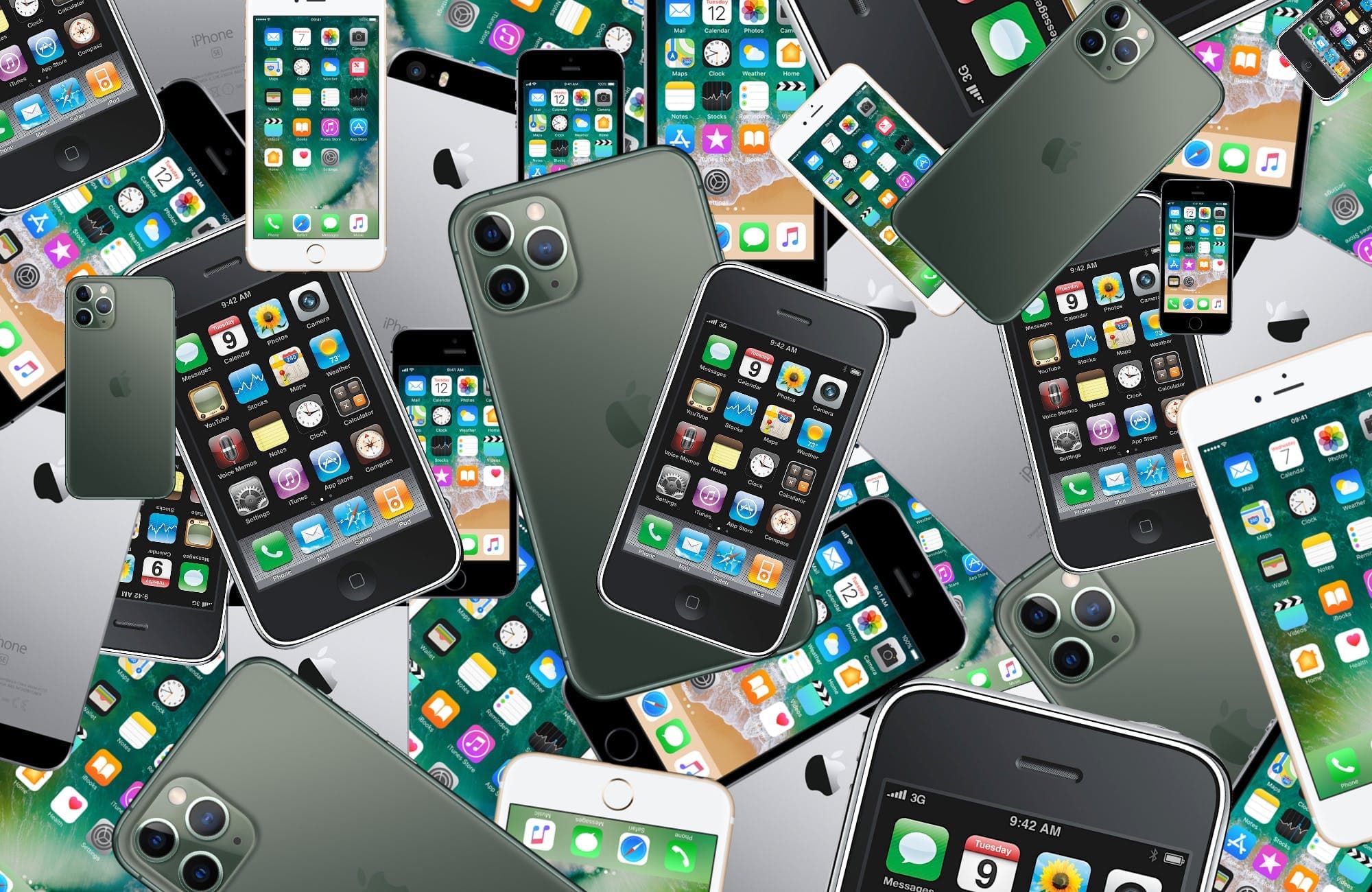Let's take a look at iPhone 12 and whether it's a step in the right direction to meet Apple's ambitious net zero targets.

Written by Andrew Marchant, Marketing Manager | Privacy, Money-Saving and Parenting Advice
Last updated on 17 December 2025

Following the announcement of the new iPhone 12 range, Apple have released their product environmental reports, which go into more depth than the brief summary found in the announcement presentation itself. We'll be taking a deep dive into the information and provide you with a summary.
This year there has been a few minor changes to the iPhone, changing what they supply in the box, the source for magnets inside the device and ultimately a more efficiently packed box so that more can fit on a shipping pallet. We hope that this will reduce lifetime emissions because as we know, over 85% of the total emissions are created before the device ever gets to you.
With four devices coming out this release, and a new form factor for the iPhone 12 mini, the comparisons between these models and of previous years can only be conducted for the 12, 12 Pro, and 12 Pro Max compared to their iPhone 11 counterparts.
There are many inconsistencies between the product reports of 2019 and the product reports of 2020 in the way that Apple report the recycled nature of the internal components to name one example. However, there are some new additions to the report that would impact the overall emissions of the devices:
The smallest of the new devices predictably has the lowest carbon footprint of the new devices, but unfortunately this doesn't make an improvement on the low lifetime emissions iPhone SE. The SE had on average 6.3kg fewer emissions than the iPhone 12 Mini, most likely due to the more advanced screen and dual camera setup.
The smaller form factor and the internal capacities compared to the Pro models and the difference between the most environmentally friendly iPhone 12 Mini and the flagship Pro Max is a considerable 46kg emissions over the lifetime of the device.
The iPhone 12 is likely to be the best selling device so having reduced carbon emissions is important to move the overall emissions in the right direction.
The device itself has an almost identical emissions cost to the iPhone 11, which is surprising considering the changes that have been brought in.
The Pro models have changed internal capacities, with the range going from 128GB to 512GB instead of 64GB. Internal storage has a proportionate effect on the carbon emissions of a device. So even though 128GB and 256GB have the same emissions as the 12 Pro, the lower end has increased from 76kg to 82kg.
The 12 Pro Max has higher emissions on average than the iPhone 11, once again as the lowest capacity option which is 128GB as opposed to the 64GB option that was available, resulting in an increase of 6kg of lifetime emissions. The highest capacity 12 Pro Max emits 1kg less than the 11 Pro Max equivalent.
Considering the iPhone 12 range shipped without a charging brick and headphones and had smaller packaging as a result, we're not seeing a considerable reduction in emissions as expected, with some of the devices falling in line with the iPhone 11 emissions.
Will removing these from the box have a net negative impact on the environment? Only owners of the iPhone 11 Pro model (joint highest CO2 emissions) will already have an Apple official USB-c compatible charging brick, 2020 unit sales indicate that covers just 14.4 million current iPhone owners already owning a compatible adaptor. This doesn’t serve the many consumers that will be in the average 2 to 3 year upgrade cycle that wouldn’t have had a cycle of devices to update with the USB-C power adaptor.
This omission of an adaptor and failure to comply with the “2 billion” adaptors already in circulation will contribute further to the 53.6 million metric tonnes of global e-waste. Apple selling this as an environmental move just doesn’t hold when you consider their new charging system has also been released at the same time.
If you're considering which iPhone 12 to get, then the mini with its lowest emissions of the group should be high on the list. We do not know what the actual crack resistance of the glass will be yet, and what effect the 5G will have on the battery life of these new devices, however, we can be sure that the choices should still remain the same, choose a low capacity model, and keep for as long as possible.

The iPhone used to define innovation. Now every new model feels the same. Is Apple’s story running out of pages?

See which Apple, Samsung and Google phones hold their value best over the first and second year on the market.
With Pixels becoming a decent contender for your upgrade choice, we’ve crunched the numbers to reveal depreciation patterns of Google Pixel phones.